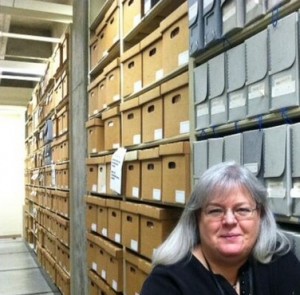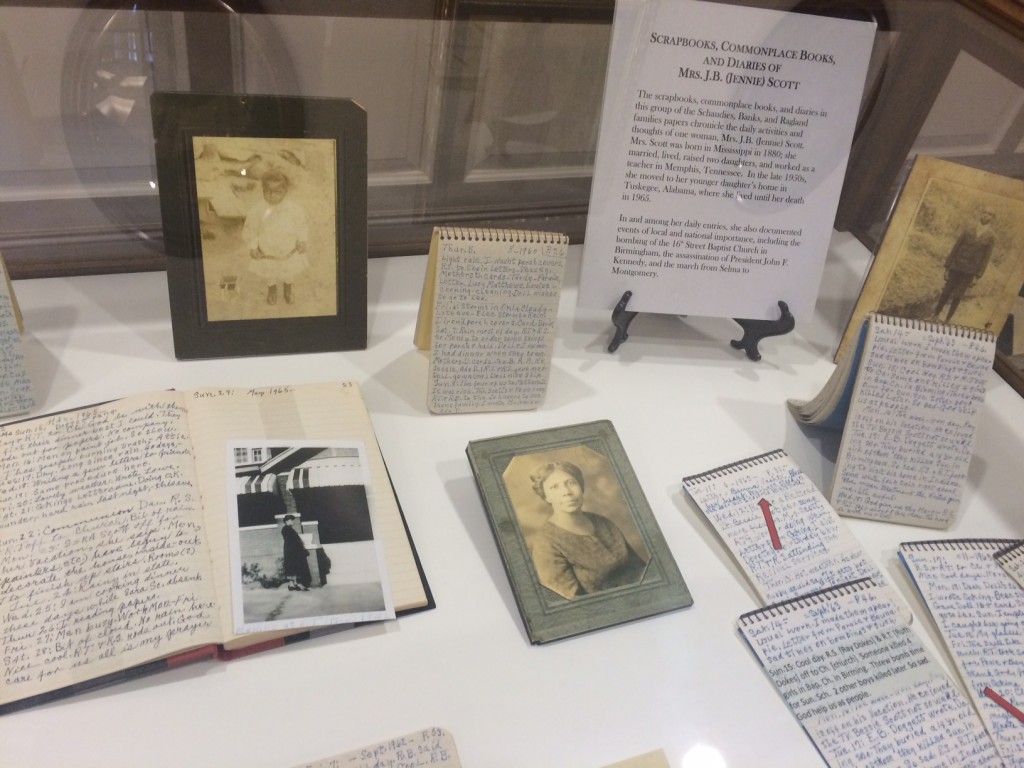By: Martha Bace, Processing Archivist
 Hello! Thank you for speaking with Cool@Hoole about the process of creating A North Alabama Clergyman’s Passion for History: Preserving Black History through Words and Images, currently mounted in the Pearce Foyer of the Amelia Gayle Gorgas Library.
Hello! Thank you for speaking with Cool@Hoole about the process of creating A North Alabama Clergyman’s Passion for History: Preserving Black History through Words and Images, currently mounted in the Pearce Foyer of the Amelia Gayle Gorgas Library.
First off, can you tell us a bit about your position in the Division of Special Collections?
I am a Processing Archivist in the W. S. Hoole Special Collections Library. In a nutshell, what that means is that I take collections we have been given and provide a concise description of the collection that includes enough detail to enable patrons and scholars determine what materials we have that are applicable to their area of interest or research.
Prior to Special Collections, what other parts of the library have you worked in?
I came to UA in April 2002 as a monographs cataloger and moved over to Hoole in October 2007 after four years as department head. Prior to coming to UA, I was a librarian at Southern Arkansas University’s Magale Library for seventeen years where I worked in just about every department except Government Documents and Archives; and for six years before that I was a cataloging/reference librarian at the University of Montevallo. So I’ve been in the library “business” for almost 35 years. Besides my MLS, I have a history degree which can come in handy in Special Collections.
What steps did you go through to create your exhibition?
Of course, a lot of it depends on whether the exhibit is highlighting a specific collection (such as the current exhibit) or an event (such as the WWI exhibition last summer). Generally for me, I first try to identify an overall theme for the exhibit. After that it works best for me to know what kind of space will be available for the exhibit. Then I look at the materials available and make a rough plan of divisions and groupings based on the number of display spaces. Next I try to find particular items in the collection(s) that are representative of the idea being displayed in each space. Once these things have been identified, I usually go through the collection more deliberately to find the best items – whether that is a photograph, a letter, a ledger, or whatever – for display. Sometimes the direction of a display case changes midway through the development of the exhibit because either there isn’t enough material to support the theme or if something more “significant” turns up that needs to be included.
As materials are decided on for each display case, captions, photographs, letters, and other 2-D materials are scanned or copied to make surrogates (most papers items used in displays outside of Hoole are surrogates for security and preservation reasons). Once the surrogates are made, I usually “mock-up” each case to see how it all works together and to see what else is needed. Occasionally I’ll take snapshots of each “mock” case to use as a reference on installation day. Then it’s just a matter of boxing up all the materials and supplies, taking it to the exhibit space, and setting it up, tweaking it as necessary.
What advice would you give to others hoping to mount a show?
Probably the best advice I can give someone planning an exhibit is to have a good understanding of the subject you’re wanting to showcase and to be flexible enough to know when to change an item out – even if it was the main reason you planned the exhibit in the first place – if it does not work within the exhibit as it is developed.
Now, to focus on a North Alabama Clergyman’s Passion for History. Tell us a bit about Rev. Wylheme Ragland, the donor who so generously gave us this collection.
Dr. Wylheme Ragland is a very distinguished, retired minister from Decatur with a passion for history. His enthusiasm covers not only the history of the various branches of his own family, but also that of probably the least documented group of African Americans – that of the educated, entrepreneurial, middle and upper middle class people of color living and working in the South before, during, and after the Civil War.
Can you explain the scope and significance of Ragland’s collection?
The Schaudies, Banks, and Ragland families papers includes letters, diaries, funeral bulletins, photographs, scrapbooks, books, cookbooks, ephemera, and memorabilia of the three extended families. The materials cover a wide range of dates from the mid nineteenth century to the present.
Dr. Ragland explained to me that his “aunt” Miss Athelyne Celest Banks had not only become the repository for the papers of her own family members, but for several bachelor, spinster, and childless friends as well. As executor of her estate, Dr. Ragland decided that donating them to the UA Libraries Division for Special Collection was the best way to preserve his family history as well as these “inherited histories.” In this way he hopes to expand the understanding of the “diversity and richness of black history in Alabama” and encourages other families to do the same.
Thank you, Martha! We’re really enjoying your exhibition in the Pearce Foyer and we encourage everyone to stop and take a look when walking through Gorgas Library.




